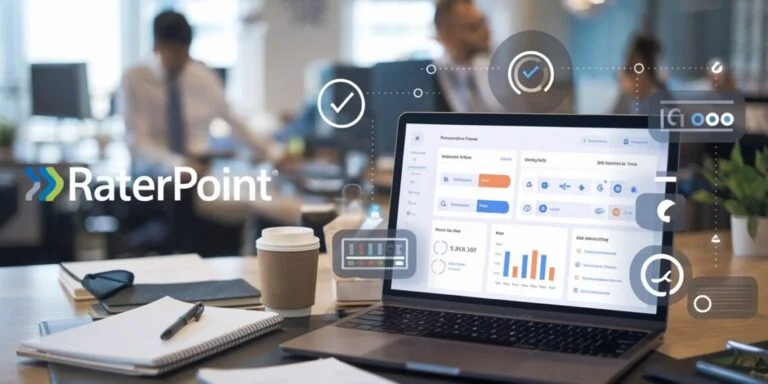Introduction
In the fast-paced digital era, businesses and organizations rely heavily on feedback and evaluation systems to measure their performance and customer satisfaction. RaterPoint is a powerful platform designed to streamline the feedback collection process, enhance evaluation methodologies and provide data-driven insights for better decision-making. Whether it is used in education corporate sectors or customer service improvement RaterPoint has proven to be a game-changer.
This article provides a deep dive into RaterPoint, covering its features, applications, benefits, and future prospects.
Understanding RaterPoint
RaterPoint is an advanced evaluation and rating platform that allows users to collect, analyze, and utilize feedback efficiently. It is designed for businesses, educational institutions, and organizations to gather insights from users, employees, or customers. The platform is built with a user-friendly interface, making it accessible for people with varying levels of technical expertise.
The core objective of RaterPoint is to bridge the gap between service providers and their audiences, ensuring that valuable insights are not lost but instead utilized to improve services, products, and experiences.
Key Features of RaterPoint
1. User-Friendly Dashboard
The platform boasts an intuitive dashboard where users can easily navigate through various feedback reports, ratings, and analytics. The clean interface ensures seamless usability and effective data visualization.
2. Customizable Surveys and Questionnaires
Organizations can create personalized surveys tailored to their needs. The survey builder includes multiple question formats, such as multiple-choice, rating scales, and open-ended responses.
3. Real-Time Analytics and Reporting
RaterPoint provides live updates on feedback, ensuring that businesses and institutions can take immediate action based on the latest data. It also generates detailed reports that help in decision-making.
4. Advanced Filtering and Segmentation
Users can filter and segment feedback based on different criteria such as location, age, demographics, or service type. This allows for more targeted and relevant analysis.
5. Integration with Existing Systems
RaterPoint integrates smoothly with existing CRM (Customer Relationship Management) tools, HR management systems, and learning management systems (LMS), making it easier to consolidate feedback data.
6. AI-Powered Sentiment Analysis
With the help of artificial intelligence, the platform can analyze textual feedback to determine customer sentiment, providing insights into positive, neutral, or negative feedback trends.
7. Anonymous Feedback Collection
For unbiased and honest evaluations, RaterPoint allows respondents to submit anonymous feedback, ensuring a higher response rate and authenticity in data collection.
8. Automated Alerts and Notifications
Organizations can set up alerts for specific feedback trends or negative ratings, allowing them to take corrective measures proactively.
Applications of RaterPoint
RaterPoint is used across multiple industries and sectors to improve performance and decision-making. Below are some of its major applications:
1. Education Sector
- Schools, colleges, and universities use RaterPoint to collect student feedback on courses faculty performance and campus facilities.
- It helps in evaluating curriculum effectiveness and identifying areas that need improvement.
- Institutions can use it for peer assessments and faculty appraisals.
2. Corporate Sector
- Businesses utilize RaterPoint for employee performance evaluations leadership assessments, and organizational climate surveys.
- It enables companies to gather feedback on workplace culture internal communication and HR policies.
- Managers can track progress and identify training needs based on feedback data.
3. Customer Service Improvement
- Companies in hospitality, retail, and e-commerce use RaterPoint to measure customer satisfaction.
- Customer service teams can use feedback to refine their interaction strategies and address pain points effectively.
4. Product Development and Market Research
- Businesses can collect real-time feedback on new products and services before or after launch.
- Market researchers can analyze customer preferences and buying behaviors.
5. Healthcare Industry
- Hospitals and clinics use RaterPoint to collect patient feedback about doctors, nurses, and overall healthcare services.
- The system helps in tracking patient satisfaction and identifying improvements in medical care and facilities.
Benefits of Using RaterPoint
1. Data-Driven Decision Making
With real-time analytics and detailed reports, organizations can make informed decisions rather than relying on assumptions.
2. Increased Customer and Employee Satisfaction
By actively collecting and acting upon feedback, businesses can improve their services, leading to higher customer and employee retention rates.
3. Time and Cost Efficiency
Automating the feedback collection process saves time and reduces the need for manual data entry and analysis.
4. Higher Engagement and Response Rates
RaterPoint’s easy-to-use interface encourages more users to participate in surveys and provide their honest feedback.
5. Transparency and Trust
Organizations that implement an open feedback system build trust among customers and employees, fostering loyalty and a positive brand reputation.
6. Better Employee Performance and Productivity
Employees can receive constructive feedback that helps them improve their performance and career growth.
7. Proactive Problem Resolution
With real-time alerts, organizations can quickly address issues before they escalate, improving overall efficiency and customer satisfaction.
Future Prospects of RaterPoint
The future of RaterPoint looks promising with advancements in AI, machine learning, and automation. Some potential developments include:
- AI-Driven Predictive Analytics: Enhancing the platform with predictive analytics will allow organizations to anticipate customer needs and trends.
- Enhanced Mobile Accessibility: Making feedback collection more accessible through mobile apps will increase user engagement.
- Blockchain for Secure Feedback: Integrating blockchain technology can ensure authenticity and prevent fraudulent feedback manipulation.
- Improved Multilingual Support: Expanding language options will make the platform more globally inclusive.
- Augmented Reality (AR) Feedback: Future updates might include interactive AR features where users can give feedback in real-world simulations.
Conclusion
RaterPoint is a transformative tool for businesses educational institutions and service providers looking to enhance their feedback and evaluation processes. With its intuitive interface powerful analytics and vast applications it provides a structured approach to collecting and utilizing feedback for improvement.
By leveraging RaterPoint, organizations can foster a culture of continuous improvement make informed decisions, and build stronger relationships with their customers and employees. The future advancements in AI and automation will further solidify its role as an essential platform in the evaluation and feedback industry.




